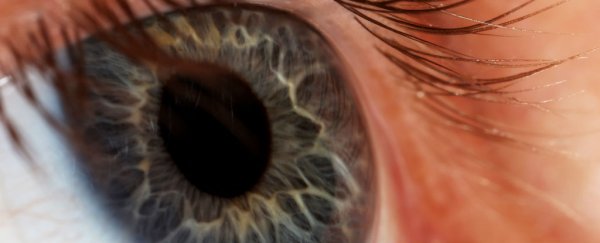New techniques that use stem cells to regrow damaged lens and cornea tissues in rabbits, monkeys, and babies have been detailed in separate studies today - one that reports successfully restoring vision in the eyes of blind rabbits, and one that describes a new process for removing cataracts in infants.
"[This] is one of the finest achievements in the field of regenerative medicine until now," stem cell researcher, Dusko Ilic from King's College London, who wasn't involved in the research, said of the cataracts study. "It is science at its best."
Because these two studies are similar but entirely separate, to make things less confusing for everybody, we'll look at the cataracts study first.
Conducted by a joint team of researchers from China and the US, the study involved using a new surgical technique to remove cataracts from the eyes of rabbits and monkeys, and then from 12 babies who were born with congenital cataracts.
Congenital cataracts cause progressive clouding of the lens from birth, and develop in about 0.4 percent of births worldwide. While not all cases require surgical removal, most do, and if a cataract goes undetected in a baby's eye, its vision will likely decline to the point of permanent blindness.
Right now, surgical options do exist for babies with congenital cataracts, but they can only stem the damage, not reverse or treat it. The technique involves removing the cloudy lens and replacing it with a permanent plastic lens.
Instead, an international team led by Kang Zhang from the University of California, San Diego School of Medicine decided to explore the possibility of using a patient's own stem cells to 'regrow' the damaged lens tissue. Basically, their hypothesis was that preserving and stimulating stem cells in the eye might kickstart the regeneration of a surgically removed lens.
They chose to work with lens epithelial stem cells (or LECs), which generate replacement lens cells throughout a person's life, but decline in production as we get older. They first tested the technique out on rabbit and monkey models, and were able to coax the lenses to heal themselves.
Tina Hesman Saey explains for Science News:
"The researchers took advantage of a complication of cataract surgery: Stem cells in the lens start to grow when the lens is injured by the surgery or other means, but pile up in disorderly pearls instead of making orderly, clear crystals. In about half of patients, the pearls can cloud vision again and must be removed with laser surgery.
By manipulating levels of proteins that control growth of the stem cells, Zhang and colleagues regenerated clear lenses in rabbits and monkeys."
After seeing positive results in their animal models, the team was given approval to conduct a small human trial on 37 babies under the age of two, who were born with congenital cataracts. Twenty-five of these babies were treated with the standard surgical procedure outlined above, while the remaining 12 were treated with the new stem cell procedure.
The procedure involved making a small incision in what's known as the lens capsule - a small sack that contains the lens - and removing the cataract. Instead of removing the damaged lens and replacing it with a plastic one, they prompted the stem cells in the lens capsule to regenerate.
According to the paper published in Nature today, it took about three months for the damaged lens to completely regenerate itself.
Not only did the stem cell group experience fewer complications and faster healing than the control group, the team reports "superior visual function" after the surgery. The babies are still classified as legally blind, but it's a huge step forward. Unfortunately, due to the way LECs deplete as we age, the researchers doubt that the treatment will work in adults, especially since artificial lenses can actually restore sight in adults who have cataracts removed.
The second study, conducted by researchers in Japan and the UK, found that human corneal epithelial cells can be used to grow 'photo-eyes' in the lab that could be implanted in the eyes of rabbits with damaged corneas and repair them.
"The proto-eyes grew in a target pattern with each ring of the target containing cells that correspond to a different layer of the eye," Hesman Saey explains. "The researchers then isolated cells that could grow into corneal epithelial cells, the outer skin of the eye. When transplanted to the eyes of rabbits with cornea damage, the human cells repaired the wound, the researchers report."
The team has yet to take this technique beyond animal models, but having achieved restored vision in the blind animals they've worked with, they hope to start clinical trials within the next two to three years.
"[I]t demonstrates that one cell type - the corneal epithelium - could be further grown in the lab and then transplanted on to a rabbit's eye where it was functional, achieving recovered vision," study co-author Andrew Quantock from Cardiff University in Wales said in a press release.
"Our work not only holds potential for developing cells for treatment of other areas of the eye, but could set the stage for future human clinical trials of anterior eye transplantation to restore visual function."
The paper has also been published in Nature.
With the announcement just last month that a UK woman has regained sight after receiving stem cell treatments, and doctors in Texas currently trialling a new optogenetics-based technique to treat adult blindness, the future is looking very promising for those born blind, or those who will go on to develop vision impairment. We live in very exciting times.
